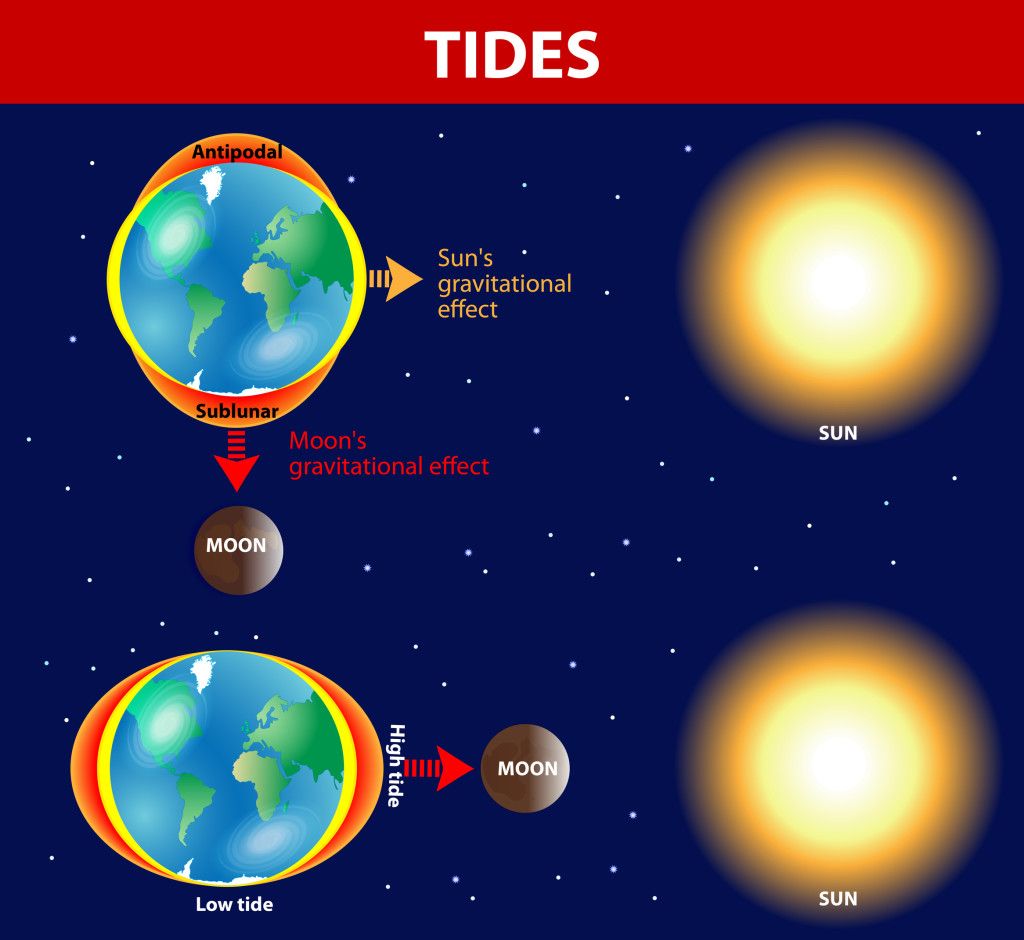Low and high tides are primarily caused by the gravitational pull of the moon and the sun, as well as the rotation of the Earth. These celestial bodies exert gravitational forces that affect the Earth’s oceans, causing the water levels to rise and fall in a rhythmic pattern.
- Gravitational Pull of the Moon:
The moon is the primary driver of tides on Earth. As the moon orbits around the Earth, its gravitational pull causes the oceans to bulge outward on the sides facing the moon and on the opposite side. This results in two high tides and two low tides every lunar day, which lasts approximately 24 hours and 50 minutes. - Gravitational Pull of the Sun:
While the moon has a greater influence on tides due to its proximity to Earth, the sun also contributes to tidal patterns. When the sun, Earth, and moon align during a new or full moon, their combined gravitational pull leads to higher high tides, known as spring tides. Conversely, when the sun and moon are at right angles to each other during the first and third quarters of the lunar cycle, their gravitational forces partially cancel out, resulting in lower high tides, known as neap tides. - Rotation of the Earth:
The rotation of the Earth also plays a role in the occurrence of tides. As the Earth rotates on its axis, different locations experience the effects of tidal bulges at different times, resulting in the alternating rise and fall of water levels along coastlines.
In addition to these primary factors, other factors such as the shape of coastlines, the depth of ocean basins, and local geography can influence the timing and intensity of tides in specific regions. Overall, the interaction between gravitational forces and the Earth’s rotation creates the predictable ebb and flow of tides that shape coastal environments and ecosystems around the world.


